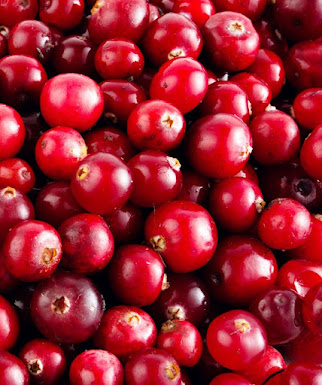The fruit are harvested at full maturity with good color (anthocyanin content) but prior to the fruit becoming over-ripe. Timing of harvest is important for fresh-market fruit so that the berries are sufficiently red but retain good storage quality.
The onset of color is associated with a distinct rise in ethylene production by the fruit. Fruit should have intense red color, surface shine, uniform size, good firmness, and freedom from defects.
At the processing plant, cranberries were sorted by visual inspection into four ripeness stages: dark-red, light-red, blush, and white. Fruit showing rot, mechanical injury, disease, or flesh softness were discarded.
Cranberries are cleaned in fanning mills, then dropped some distance to eliminate soft or rotten specimens (the defective berries do not bounce, those suitable for food bounce up over a barrier), then washed, first in acid or alkaline solutions to remove spray residues, then in water.
Cranberries handled as fresh are packed in paper fined wooden boxes, and the product is slowly cooled to 36 – 40 °F. The use of refrigeration and proper temperature control is the primary postharvest technology used to extend the storage life of fresh fruits.
Many factors can affect chilling sensitivity and the expression of damage to the fruit. These factors include growing conditions, cultural practices, and fruit maturity. In addition, the expression of physiological breakdown is dependent on storage duration. Cranberries should be held at 36 - 40 °F until sold to the consumer.
At this temperature, cranberries have a storage life of several months. Cranberries may be held frozen prior to the manufacture of jelly or sauce. They are placed in large metal containers, frozen, in bulk in cold-air rooms, and held in this condition until defrosted for purposes of preparing cooked products.
Cranberries post-harvest
Soft Drinks: Definition, Ingredients, and Standards
-
In the United States, the term *soft drinks* is commonly applied to
beverages that contain no alcohol. These drinks are widely consumed across
all age gr...






